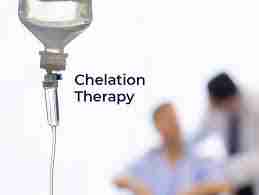
In the realm of alternative medicine, few topics stir as much debate and intrigue as Chelation Therapy Pennsylvania. This treatment, which involves the administration of chelating agents to remove heavy metals from the body, has garnered attention for its potential to address conditions related to heavy metal toxicity. However, questions about its safety, efficacy, and appropriate usage persist. Let’s delve into the nuances of Chelation Therapy, navigating the contours of evidence and opinion to shed light on its role in healthcare.
Understanding Chelation Therapy
Chelation Therapy operates on the principle that certain substances, known as chelating agents, can bind to heavy metals in the body, forming complexes that are excreted through urine or feces. Originally developed as a medical treatment for acute heavy metal poisoning, Chelation Therapy has since been explored as a potential intervention for chronic heavy metal exposure and related health conditions.
Efficacy
The efficacy of Chelation Therapy remains a subject of considerable debate. While some studies suggest potential benefits, particularly in cases of acute heavy metal poisoning, the evidence supporting its use for chronic conditions is less robust. Critics point to the lack of large-scale, well-designed clinical trials demonstrating significant clinical outcomes, while proponents highlight anecdotal reports and smaller studies indicating improvements in symptoms such as cognitive function and cardiovascular health.
Safety Considerations
Safety is a paramount concern when considering any medical intervention, and Chelation Therapy is no exception. While chelating agents are generally considered safe when used appropriately, they can carry risks, particularly when administered improperly or in excessive doses. Potential side effects of Chelation Therapy include electrolyte imbalances, kidney damage, and allergic reactions. Additionally, Chelation Therapy has the potential to deplete essential minerals from the body, necessitating careful monitoring and supplementation.
Regulatory Landscape and Controversies
The regulatory landscape surrounding Chelation Therapy is complex and varies by jurisdiction. In some regions, Chelation Therapy is approved for specific medical indications, such as lead poisoning, while in others, it falls into a gray area of complementary and alternative medicine. Controversies surrounding Chelation Therapy extend to issues of regulation, reimbursement, and ethical considerations, further complicating its integration into mainstream healthcare practice.
Exploring Integrative Approaches
In recent years, there has been growing interest in integrative approaches to healthcare that combine conventional and complementary therapies. When it comes to heavy metal detoxification, integrative practitioners may employ a range of strategies, including dietary modifications, nutritional supplementation, lifestyle interventions, and environmental modifications. By addressing underlying imbalances and supporting the body’s natural detoxification pathways, integrative approaches seek to promote holistic health and wellness.
Conclusion
As we navigate the landscape of Chelation Therapy, it’s essential to approach with caution and critical thinking. While the potential benefits of Chelation Therapy for heavy metal detoxification are intriguing, they must be weighed against considerations of safety, efficacy, and appropriateness for individual patients. As research continues and our understanding evolves, a nuanced approach that integrates evidence-based practices with patient-centered care will guide us toward the most effective and responsible use of Chelation Therapy in healthcare.